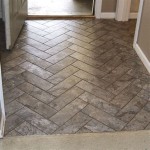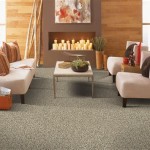Ceramic Wall and Floor Tiles: A Comprehensive Overview
Ceramic wall and floor tiles have been a staple in architectural design and construction for centuries, valued for their durability, aesthetics, and versatility. These tiles are manufactured from a blend of clay, minerals, and water, which are molded into shape, fired in a kiln at high temperatures, and often glazed to create a protective and decorative surface. Their widespread use stems from their ability to withstand various environmental conditions, ease of maintenance, and the vast array of design possibilities they offer.
The production process significantly influences the final characteristics of ceramic tiles. The specific combination of raw materials, the temperature and duration of firing, and the type of glaze applied all contribute to the tile's strength, water resistance, and appearance. Consequently, ceramic tiles are available in a wide range of sizes, shapes, colors, textures, and patterns, making them suitable for diverse applications, from residential bathrooms and kitchens to commercial spaces and exterior facades.
This article delves into the key aspects of ceramic wall and floor tiles, exploring their manufacturing process, types, advantages, disadvantages, and applications, providing a comprehensive understanding of their role in contemporary building design.
Manufacturing Process of Ceramic Tiles
The creation of ceramic tiles involves a series of carefully controlled steps, each critical to the final product's integrity and aesthetic appeal. This process typically consists of raw material preparation, body formulation, shaping, drying, glazing (optional), and firing.
Raw material preparation begins with the selection and processing of the necessary ingredients. Clay, the primary component, is chosen for its plasticity and binding properties. Other minerals, such as silica, feldspar, and talc, are added to adjust the tile's behavior during firing and to improve its strength and durability. These raw materials are typically ground into a fine powder to ensure uniform mixing and consistent tile properties.
Body formulation involves mixing the prepared raw materials with water to create a slurry, often referred to as a slip. The proportions of each ingredient are carefully controlled to achieve the desired characteristics of the tile body. This slip is then processed to remove any air bubbles or impurities, ensuring a smooth and consistent texture.
Shaping the tiles can be achieved through various methods, including pressing, extrusion, and casting. Pressing involves compacting the slip in a mold under high pressure to form the tile's shape. Extrusion involves forcing the slip through a die to create long strips of tile, which are then cut to the desired length. Casting involves pouring the slip into molds and allowing it to dry and harden. Pressing is the most common method for producing floor tiles due to its ability to create dense and uniform products. Extrusion is often used for creating mosaic tiles and other specialty shapes.
Drying the shaped tiles is crucial to remove excess moisture and prevent cracking during firing. This process is typically carried out in controlled environments with regulated temperature and humidity levels. Gradual drying minimizes stress within the tile body, ensuring its structural integrity.
Glazing is an optional step that involves applying a thin layer of liquid glass to the surface of the tile. The glaze provides a decorative finish, enhances the tile's water resistance, and improves its durability. Glazes are available in a wide range of colors, textures, and finishes, allowing for endless design possibilities. Some tiles are left unglazed for a more rustic or natural appearance.
Firing is the final and most critical step in the manufacturing process. The tiles are placed in a kiln and fired at high temperatures, typically between 1000°C and 1300°C, depending on the type of clay and the desired properties of the tile. During firing, the clay particles fuse together, creating a hard, dense, and durable material. The glaze also melts and fuses to the tile surface, creating a smooth and impervious finish. The firing process also results in shrinkage, which must be accounted for in the initial design of the tile.
After firing, the tiles are inspected for any defects and sorted according to quality. They are then packaged and prepared for distribution.
Types of Ceramic Tiles
Ceramic tiles are broadly classified into several categories based on their manufacturing process, porosity, and intended application. Understanding these different types is crucial for selecting the appropriate tile for a specific project.
Earthenware tiles are characterized by their high porosity and low firing temperature. They are typically used for wall applications in areas with low moisture exposure, such as bedrooms and living rooms. Earthenware tiles are relatively soft and prone to chipping, making them unsuitable for high-traffic areas or floors.
Stoneware tiles are denser and more durable than earthenware tiles, thanks to their higher firing temperature and lower porosity. They are suitable for both wall and floor applications in residential settings, including kitchens and bathrooms. Stoneware tiles offer a good balance of affordability, durability, and aesthetic appeal.
Porcelain tiles are the most durable and water-resistant type of ceramic tile. They are manufactured from a finer clay and fired at even higher temperatures than stoneware tiles, resulting in a very dense and impervious material. Porcelain tiles are ideal for high-traffic areas, commercial spaces, and exterior applications. They are also resistant to frost damage, making them suitable for use in cold climates.
Terracotta tiles are made from a specific type of clay that gives them a characteristic reddish-brown color. They are typically unglazed and have a rustic appearance. Terracotta tiles are often used for floors and patios, adding a touch of warmth and natural beauty to any space. However, they are porous and require sealing to protect them from staining and water damage.
Mosaic tiles are small, typically square or rectangular tiles that are arranged in a pattern or design. They are made from a variety of materials, including ceramic, glass, and stone. Mosaic tiles are often used for decorative accents, backsplashes, and shower floors. Their small size allows for intricate designs and curved surfaces.
Quarry tiles are unglazed tiles made from natural clay. They are known for their durability and slip-resistance, making them suitable for industrial and commercial applications, as well as outdoor areas such as patios and walkways. Quarry tiles have a rustic appearance and are available in a limited range of colors.
Advantages and Disadvantages of Ceramic Tiles
Ceramic tiles offer numerous advantages that make them a popular choice for both residential and commercial projects. However, they also have some limitations that should be considered before making a decision.
One of the primary advantages of ceramic tiles is their durability. They are resistant to scratches, stains, and fading, making them ideal for high-traffic areas. With proper installation and maintenance, ceramic tiles can last for decades.
Ceramic tiles are also relatively easy to clean and maintain. Their smooth, impervious surface prevents the absorption of dirt and stains, making them easy to wipe clean with a damp cloth. They do not require any special cleaning products or treatments.
Another advantage of ceramic tiles is their versatility. They are available in a vast array of colors, patterns, textures, and sizes, allowing for endless design possibilities. They can be used to create a wide range of aesthetic styles, from traditional to contemporary.
Ceramic tiles are also a cost-effective flooring option, especially compared to other materials such as hardwood or natural stone. They are relatively inexpensive to purchase and install, making them a budget-friendly choice for many homeowners.
Furthermore, ceramic tiles are fire-resistant and do not emit harmful chemicals or fumes, making them a safe and healthy choice for indoor environments.
However, ceramic tiles also have some disadvantages. One of the main drawbacks is their hardness, which can make them uncomfortable to stand on for extended periods. This can be mitigated by using area rugs or mats in areas where people spend a lot of time standing.
Another disadvantage is that ceramic tiles can be cold to the touch, especially in colder climates. This can be addressed by installing underfloor heating systems, which provide a comfortable and energy-efficient way to warm the tiles.
Ceramic tiles can also be slippery when wet, especially if they have a smooth, glazed surface. This can be a safety hazard, particularly in bathrooms and kitchens. To mitigate this risk, it is important to choose tiles with a slip-resistant surface or to use area rugs or mats in wet areas.
Finally, ceramic tiles can be difficult and time-consuming to install properly. It is important to hire a qualified installer to ensure that the tiles are laid evenly and that the grout lines are properly sealed.
Applications of Ceramic Tiles
Ceramic tiles find application in a diverse range of settings due to their versatility, durability, and aesthetic properties. Their adaptability makes them suitable for both residential and commercial projects, offering solutions for various functional and design requirements.
In residential settings, ceramic tiles are commonly used in bathrooms for floors, walls, and shower surrounds. Their water resistance and ease of cleaning make them an ideal choice for these high-moisture environments. They are also frequently used in kitchens for backsplashes and flooring, providing a durable and hygienic surface.
Living rooms and bedrooms may also incorporate ceramic tiles, especially in warmer climates where their coolness is beneficial. Ceramic tiles can be used to create striking feature walls or to define specific areas within a larger space. Various patterns and textures can add visual interest and enhance the overall aesthetic of the room.
Commercial spaces, such as offices, restaurants, and retail stores, frequently utilize ceramic tiles for their durability and ease of maintenance. High-traffic areas benefit from the scratch and stain resistance of ceramic tiles, reducing the need for frequent replacements or repairs. Their aesthetic flexibility allows for the creation of professional and inviting environments.
Exterior applications for ceramic tiles include patios, walkways, and building facades. Specific types of ceramic tiles, such as porcelain tiles, are frost-resistant and can withstand harsh weather conditions, making them suitable for outdoor use. They can add visual appeal to exterior spaces and provide a durable and low-maintenance surface.
In specialized environments, such as hospitals and laboratories, ceramic tiles are valued for their hygienic properties and resistance to chemicals. Their smooth, non-porous surface prevents the growth of bacteria and makes them easy to sanitize. This is essential for maintaining a clean and sterile environment.
Furthermore, ceramic tiles are increasingly used in sustainable building designs due to their long lifespan and recyclability. They can contribute to achieving LEED certification and other green building standards.

5 Reasons Ceramic Tiles Work In Bathrooms Direct
Why Ceramic Tiles Are A Great Option For Your Floors And Walls

Mystery Carrara White Marble Effect Matt Ceramic Tile

Endless Flooring By Margres

Benefits Of Using Ceramic Tiles Instead Paint And Wood On Wall Floor

Bathroom Building Material Ceramic Wall And Floor Tiles With Borders Tile Made In Com

Beautiful Ceramic Floor Tiles From Refin

Wickes York Grey Ceramic Wall Floor Tile 300 X 300mm Co

Sorolla Patterned Glazed Ceramic Wall Floor Tile 250x250mm Verona Group

Marble Flooring Ceramic Wall Glaze Ceramica Porcelain Polish Big Bathroom Tile








